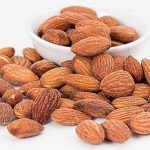Introduction to Herbal Remedies
The Allure of Natural Treatments
In an age where synthetic medicines and complex surgical procedures dominate healthcare, the allure of natural treatments remains undiminished. Many individuals are drawn to the idea of using herbs and plants for healing, viewing them as gentle, holistic alternatives to pharmaceuticals. This interest is fueled by a desire to harness the healing power of nature and to use remedies that have been part of human wellness practices for thousands of years.
Understanding Herbal Medicine
Herbal medicine, also known as phytotherapy, involves using a plant’s seeds, berries, roots, leaves, bark, or flowers for medicinal purposes. The practice is deeply rooted in traditional knowledge and has evolved over centuries, with each culture contributing its own herbal lore. Modern herbal medicine seeks to marry traditional practices with contemporary scientific understanding, ensuring that remedies are both time-honored and evidence-based.
Benefits of Choosing Herbal Remedies
- Accessibility: Many herbs can be grown at home or sourced locally, making them readily available to those seeking natural treatments.
- Lower Side Effects: When used correctly, herbal remedies often have fewer side effects compared to conventional medicines.
- Cost-Effectiveness: Herbal treatments can be more affordable than prescription medications, especially for those without insurance.
- Support for Overall Well-being: Herbal remedies can support holistic health by not only addressing symptoms but also enhancing overall vitality.
Precautions and Considerations
While herbal remedies offer many benefits, it is crucial to approach them with caution. Not all herbs are safe for everyone, and interactions with prescription medications can occur. It is essential to:
- Consult with a healthcare professional, especially if you have underlying health conditions or are taking other medications.
- Source herbs from reputable suppliers to ensure quality and purity.
- Start with small doses to observe how your body reacts to a new herbal remedy.
- Be aware of the potential for allergic reactions and discontinue use immediately if adverse effects occur.
By taking these precautions, individuals can safely explore the benefits of herbal remedies and integrate them into their healthcare regimen.
Herbs for Digestive Health
Ginger for Nausea and Digestion
Long revered for its medicinal properties, ginger is a powerhouse when it comes to easing digestive discomfort. Its active components, such as gingerol, work to soothe the stomach and can help alleviate nausea caused by motion sickness, pregnancy, or chemotherapy. Ginger also promotes the rapid emptying of the stomach, which can be beneficial for people suffering from indigestion. To harness ginger’s benefits, one can consume it in various forms, including fresh, dried, as a tea, or even in capsules.
Peppermint for IBS and Bloating
Peppermint is another herb that has been used for centuries to treat digestive issues, particularly irritable bowel syndrome (IBS) and bloating. The menthol in peppermint oil is an antispasmodic, meaning it relaxes the smooth muscles of the digestive tract, which can relieve symptoms of IBS. Peppermint can be taken as an oil capsule, tea, or tincture. However, it should be used cautiously as it can worsen heartburn in some individuals.
Chamomile for Stomach Aches
Known for its calming effects, chamomile is not just for promoting sleep but also for soothing stomach aches. It has anti-inflammatory and antispasmodic properties that help reduce cramping and spasms in the gut. Chamomile tea is a gentle remedy that can be enjoyed after meals to aid digestion or at the first sign of stomach discomfort.
Licorice Root for Heartburn and GERD
Licorice root has been used in traditional medicine to treat gastrointestinal problems, including heartburn and gastroesophageal reflux disease (GERD). It contains glycyrrhizin, which can soothe inflammation and repair stomach lining. Deglycyrrhizinated licorice (DGL) is a form that has had the glycyrrhizin removed to avoid potential side effects, such as high blood pressure. DGL supplements can be taken before meals to prevent heartburn or as chewable tablets to alleviate symptoms.
While these herbal remedies can offer relief for various digestive ailments, it is important to consult with a healthcare professional before starting any new treatment, especially if you are pregnant, nursing, or on medication. Additionally, quality and sourcing of herbs can greatly affect their efficacy, so choose reputable brands and products.
Herbal Solutions for Stress and Anxiety
Ashwagandha for Stress Reduction
Ashwagandha, also known as Withania somnifera, is a revered adaptogenic herb in Ayurvedic medicine. It is known for its ability to help the body manage stress and promote a sense of well-being. By regulating the stress hormone cortisol, ashwagandha supports adrenal health and helps mitigate the body’s stress response. For those seeking a natural way to reduce stress, ashwagandha can be taken in capsule or powder form, with meals to enhance absorption.
Lavender for Anxiety and Sleep
The soothing scent of lavender is synonymous with relaxation and tranquility. Lavender essential oil, derived from Lavandula angustifolia, is widely used in aromatherapy to alleviate anxiety and improve sleep quality. Its calming properties can be enjoyed by diffusing the oil in the air, applying it topically with a carrier oil, or adding it to a warm bath. Lavender’s gentle yet potent effects make it a popular choice for those looking to ease their mind and prepare for a restful night’s sleep.
Lemon Balm for Mood and Cognitive Function
Lemon balm, or Melissa officinalis, is a mild sedative herb with a refreshing citrus aroma. It has been shown to improve mood and cognitive function, making it beneficial for those experiencing stress-related anxiety and tension. Lemon balm tea can be consumed throughout the day to harness its stress-reducing effects. Additionally, it can be particularly helpful before bedtime to encourage relaxation and support sleep quality.
Passionflower for Insomnia
Passionflower, known scientifically as Passiflora incarnata, possesses calming and anxiolytic properties that are effective in promoting relaxation and combating insomnia. By enhancing GABA activity in the brain, passionflower helps to induce a state of calmness, making it a valuable ally for those with sleep disturbances. Consuming passionflower tea in the evening can aid in unwinding and preparing the body for a night of restorative sleep.
These herbal remedies offer a holistic approach to managing stress and anxiety. By incorporating herbs like ashwagandha, lavender, lemon balm, and passionflower into your daily routine, you can tap into nature’s pharmacy to find natural, effective relief from the pressures of everyday life. Remember to consult with healthcare professionals before starting any new herbal regimen, especially if you have underlying health conditions or are taking other medications.
Natural Remedies for Skin Conditions
Aloe Vera for Burns and Wounds
The succulent plant Aloe vera is renowned for its soothing and healing properties, particularly when it comes to skin afflictions. The gel extracted from its leaves is rich in compounds that reduce inflammation and promote skin regeneration. Applying aloe vera gel directly to minor burns and wounds can offer immediate cooling relief and aid in faster healing. It’s important to use pure aloe vera gel and apply it gently to the affected area, ensuring that the skin is clean to prevent infection.
Tea Tree Oil for Acne
Tea tree oil, derived from the leaves of the Melaleuca alternifolia tree, has been used for centuries to treat skin conditions. Its antibacterial and anti-inflammatory properties make it an effective natural remedy for acne. A small amount of tea tree oil can be diluted with a carrier oil, such as coconut or jojoba oil, and applied to the skin with a cotton swab. Consistent use can lead to a noticeable reduction in acne severity and skin clarity. However, it’s crucial to conduct a patch test before widespread use to ensure no allergic reaction occurs.
Calendula for Eczema and Rashes
Calendula officinalis, commonly known as marigold, has been a staple in herbal medicine for its healing properties. Calendula creams and ointments are particularly beneficial for those suffering from eczema and rashes. The anti-inflammatory and antimicrobial effects of calendula help to soothe the skin, reduce redness, and promote healing. For best results, apply calendula-infused products to the affected areas regularly, ensuring the skin is clean to enhance the herb’s therapeutic benefits.
Witch Hazel for Inflammation
Witch hazel is a natural astringent obtained from the bark and leaves of the Hamamelis virginiana plant. It is particularly effective in treating skin inflammation and can be used for a variety of conditions, including insect bites, bruises, and minor irritations. The tannins present in witch hazel help to tighten skin tissues and relieve inflammation. When using witch hazel, it is advisable to select an alcohol-free version to avoid skin dryness. Apply with a clean cloth or cotton pad to the inflamed area to experience its calming effects.
Incorporating these natural remedies into your skincare routine can provide gentle and effective treatment for common skin conditions. However, it is essential to remember that while these remedies are natural, they are still potent. Always perform a patch test to check for allergic reactions and consult with a healthcare professional if you have any concerns or if conditions persist.
Herbs for Immune Support
Echinacea for Cold Prevention
Echinacea, a prairie flower known for its daisy-like appearance, has been a staple in herbal medicine for boosting the immune system. It is particularly renowned for its ability to prevent and treat the common cold. Studies suggest that Echinacea stimulates the body’s immune response, potentially reducing the likelihood of catching colds. Moreover, if a cold does take hold, Echinacea may help shorten the duration and severity of symptoms. It’s commonly consumed as a tea, tincture, or supplement, especially during the cold season.
Garlic for Immune Boosting
The pungent bulb of garlic is not just a culinary favorite but also a powerful immune booster. Garlic contains compounds like allicin, which have been shown to enhance the disease-fighting response of certain types of white blood cells when they encounter viruses, such as the ones that cause the common cold or flu. Incorporating garlic into meals or taking it in supplement form can be a proactive measure to strengthen your immune system.
Elderberry for Flu Symptoms
Elderberry is a dark purple berry from the European elder tree and has been used for centuries to treat respiratory illnesses. It is highly regarded for its antiviral properties, particularly against the flu virus. Elderberry can help alleviate flu symptoms like fever, headache, sore throat, fatigue, cough, and body aches. It is available in various forms, including syrups, gummies, lozenges, and teas. However, it’s important to start taking elderberry supplements at the first sign of illness for the best results.
Turmeric for Anti-Inflammatory Effects
Turmeric, with its active compound curcumin, is celebrated for its potent anti-inflammatory and antioxidant effects. Chronic inflammation is a root cause of many illnesses, and curcumin can modulate the immune system to help fight off pathogens and prevent disease. Turmeric can be added to food, taken as a capsule, or drunk as a tea. Its benefits extend beyond immune support, potentially improving digestion and reducing symptoms of arthritis.
These herbs offer a natural way to support and enhance the immune system. Whether it’s through prevention or alleviating symptoms, incorporating Echinacea, garlic, elderberry, and turmeric into your health regimen can be a wise step towards maintaining well-being. However, it’s crucial to remember that while these remedies can provide benefits, they should not replace medical treatment when necessary. Always consult with a healthcare professional before starting any new herbal supplement, especially if you have underlying health conditions or are taking other medications.
Herbal Remedies for Pain and Inflammation
Willow Bark for Pain Relief
Willow bark, the bark of several varieties of willow tree, has been used for centuries for pain relief and inflammation. The active ingredient in willow bark is salicin, which the body converts into salicylic acid – the precursor of aspirin. This natural remedy is particularly effective for reducing the pain associated with headaches, low back pain, osteoarthritis, and other conditions. A typical dose of willow bark is 240 mg per day. However, it should not be used in children or adolescents due to the risk of Reye’s syndrome, and with caution in those with peptic ulcers or certain other health conditions.
Turmeric for Joint Pain and Arthritis
Turmeric, a spice renowned for its vibrant color and flavor, contains curcumin, a compound with potent anti-inflammatory properties. Curcumin helps to reduce pain, stiffness, and inflammation associated with joint disorders like arthritis. It works by inhibiting inflammatory pathways, including the COX-2 enzyme, similar to certain nonsteroidal anti-inflammatory drugs (NSAIDs). Turmeric can be incorporated into the diet or taken as a supplement, with a common dosage being 400–600 mg of standardized turmeric powder three times per day. It is generally well-tolerated, but high doses or long-term use can lead to gastrointestinal issues, and it should be used with caution in individuals on anticoagulant therapy.
Capsaicin for Muscle Aches
Capsaicin, the active component in chili peppers, provides an analgesic effect by depleting substance P, a neurotransmitter that transmits pain signals. It is available in over-the-counter creams and patches for the treatment of muscle aches, joint pain, and neuropathic pain. Capsaicin should be applied three to four times a day to the affected area, but users should be aware that it can cause a burning sensation upon initial application. This sensation typically diminishes with regular use. It is important to wash hands thoroughly after applying capsaicin cream to avoid irritation to the eyes and mucous membranes.
Arnica for Bruises and Sprains
Arnica, derived from the Arnica montana plant, is commonly used in gel or cream form for the topical treatment of bruises, sprains, and muscle soreness. The anti-inflammatory effects of arnica can help to reduce pain and swelling from minor injuries. It is recommended to apply arnica topically several times a day to the affected area, but it should not be applied to broken skin or open wounds. While generally safe when used as directed, arnica can cause allergic reactions in some individuals.
Herbal remedies offer a natural and effective way to manage pain and inflammation. Willow bark, turmeric, capsaicin, and arnica are just a few examples of herbs that have been used for centuries to alleviate various types of pain. When integrating these remedies into your pain management strategy, it is essential to consider the proper dosages, potential side effects, and interactions with other medications. Always consult with a healthcare professional before starting any new treatment, especially if you have underlying health conditions or are taking other medications.
Conclusion: Integrating Herbal Remedies into Daily Life
Creating a Personal Herbal Toolkit
As we embrace the wisdom of herbal remedies for everyday ailments, it’s beneficial to create a personal herbal toolkit. This toolkit should include a selection of herbs that address common health concerns such as digestion, stress, skin care, and immune support. Start with basics like ginger, peppermint, chamomile, and echinacea, and expand as you become more familiar with herbal remedies. Organize your herbs in a way that makes them easily accessible and consider different forms such as teas, tinctures, capsules, and topicals.
Consulting with Healthcare Professionals
While herbal remedies can be powerful allies in maintaining health, it’s crucial to consult with healthcare professionals, especially if you have existing health conditions or are taking other medications. Interactions between herbs and pharmaceuticals can occur, and a healthcare provider can help navigate these safely. They can also provide guidance on appropriate dosages and forms of herbs to use for specific conditions.
Sustainable Sourcing of Herbs
As the demand for herbal remedies grows, so does the importance of sustainable sourcing. Choose to support companies that ethically harvest and produce herbal products. This not only ensures the longevity of plant species but also promotes the health of the environment. Whenever possible, opt for organic and fair-trade products to contribute to a more sustainable and equitable industry.
Continued Learning and Experimentation
The field of herbal medicine is vast and ever-evolving. Commit to continued learning by reading reputable sources, attending workshops, or even growing your own medicinal herbs. Experimentation is key to understanding what works best for your body. However, always do so with caution and under the guidance of a professional. Documenting your experiences can be helpful for future reference and for sharing your journey with others.
Incorporating herbal remedies into your daily life can be a rewarding and healthful practice. With a personalized toolkit, professional guidance, sustainable habits, and an open mind for learning, you can harness the power of nature’s pharmacy to support your health and well-being.
READ MORE: 13 Herbs For Your Weight Loss Goals
Sources:
https://my.clevelandclinic.org/health/drugs/22995-phytotherapy
https://www.nccih.nih.gov/health/licorice-root
https://www.mountsinai.org/health-library/herb/lemon-balm#:~:text=Lemon%20balm%20(Melissa%20officinalis)%2C,%2C%20as%20well%20as%20colic).
https://www.ncbi.nlm.nih.gov/pmc/articles/PMC7434784/
https://www.webmd.com/vitamins/ai/ingredientmono-955/willow-bark









